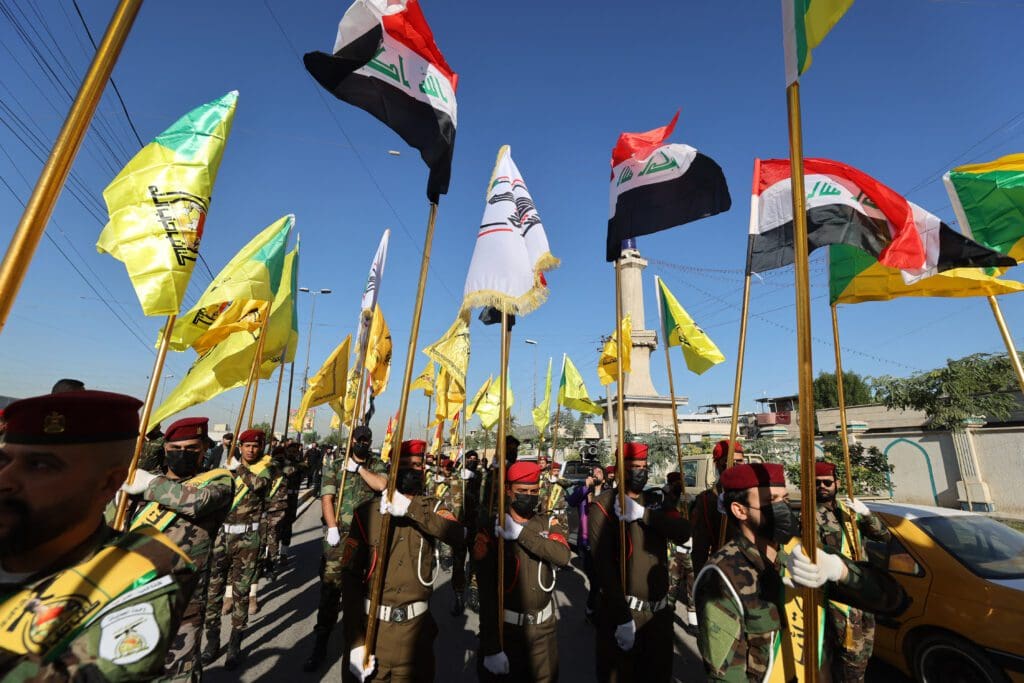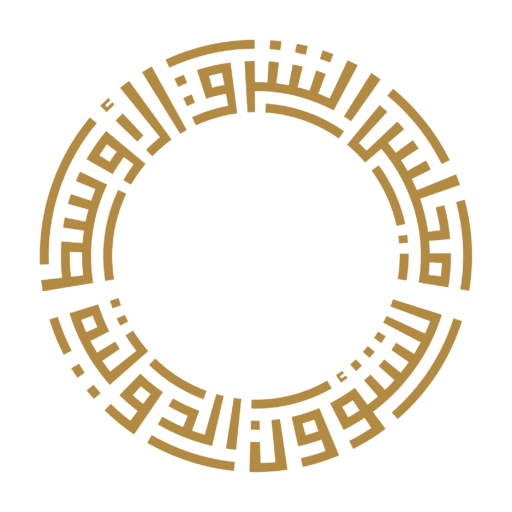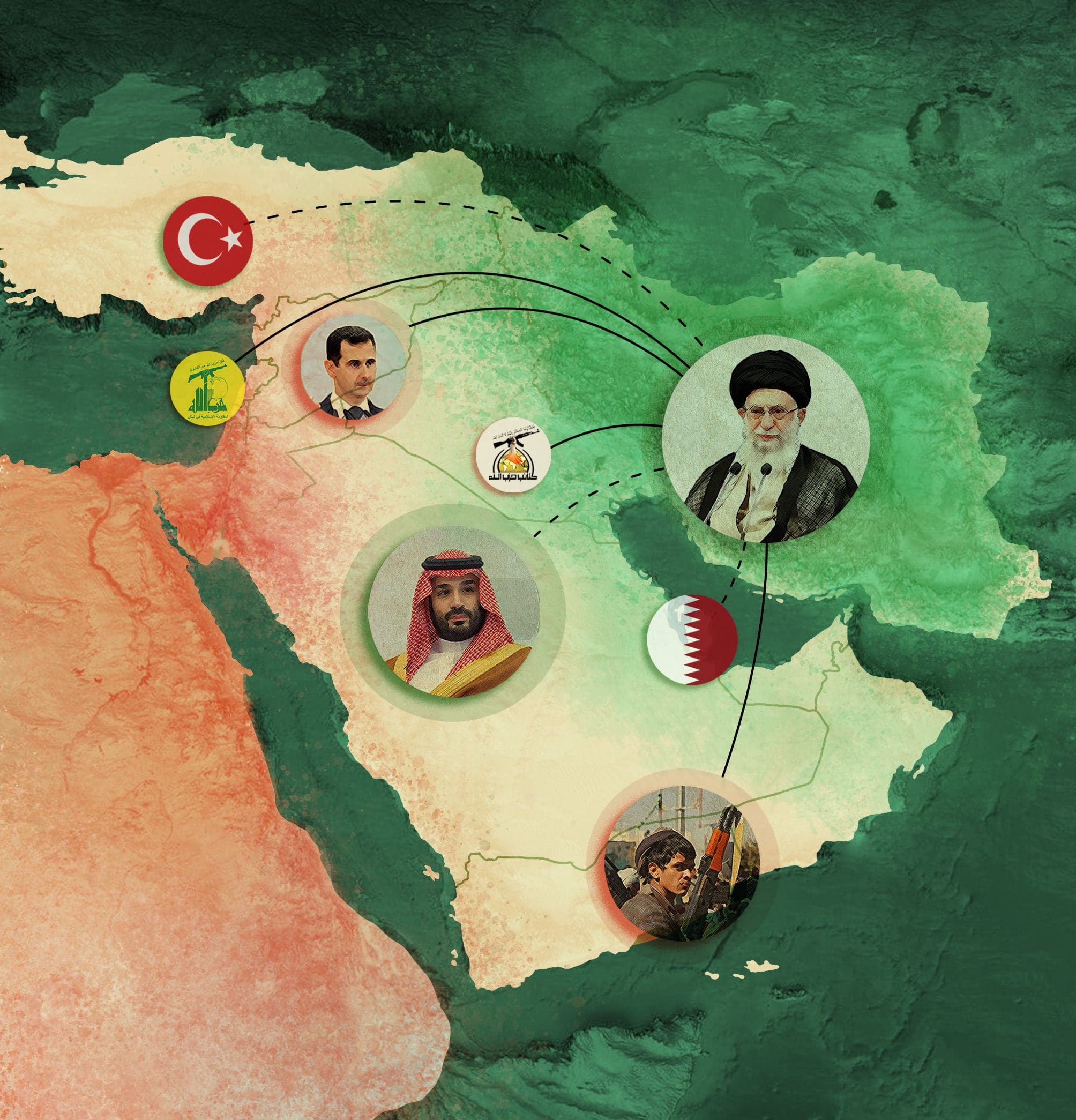
From Rivals to Allies: Iran’s Evolving Role in Iraq’s Geopolitics
April 2024
Introduction
In the complex landscape of Middle Eastern geopolitics, the relationship between Iran and Iraq presents a compelling study of shifts and turns. Historically, the two nations have transitioned from an intense rivalry to a surprising collaboration. The harrowing experiences of the 1980s war are etched deeply in their collective memory.1 However, the dawn of the new millennium unveiled a surprising turn of events, positioning Iran as an influential actor in Iraq’s political, security, and economic realms. This chapter analyzes Iran’s expanding influence in Iraq, shedding light on the diverse forces that shape their relationship.
Iran-Iraq Relations: Historical Context
Iran and Iraq’s cultural and religious ties date back centuries. The two countries share an almost 1,000 mile-long (1,599 kilometer-long) border, and the adjacent regions, particularly Khuzestan and Basra, have been the subject of territorial disputes.2 Notably, how to mark the borders of the Shatt al-Arab river fueled tensions prior to the Iraq-Iran war.3 In an effort to address these issues, Algerian President Houari Boumediene facilitated the signing of the 1975 Algiers Agreement between Iraq and Iran.4 This diplomatic effort focused on resolving the border disputes, especially around the Shatt al-Arab waterway, which holds strategic importance for oil exports.5 As per the agreement, Iraq and Iran decided to mark their border along the river’s thalweg.6 Additionally, Iran agreed to stop supporting Kurdish rebels in northern Iraq.7 This agreement briefly reduced tensions. However, it did not fully address deeper issues like territorial and ideological ambitions.
The departure of Shah Mohammad Reza Pahlavi from Iran in January 1979 and the subsequent establishment of the Islamic Republic under Ayatollah Ruhollah Khomeini marked a profound ideological shift in Iran.8 This transformation represented not just a change in governance but a radical re-orientation of the country’s political, social, and international identity, from a secular, pro-Western monarchy to a theocratic, anti-Western regime.9 Saddam Hussein’s rise to power as the President of Iraq in 1979 further intensified these dynamics.10 In January of 1980, Abolhassan Bani-Sadr was elected as Iran’s first president.11 That same year, a diplomatic rift started on March 8 when Iran withdrew its ambassador from Iraq.12 In April, assassination attempts on Iraq’s Foreign Minister Tariq Aziz and Minister of Culture and Information Latif Nusseif al-Jasim—both attributed to Iranian agents—further inflamed the situation.13 Between May and August, clashes along the Iraq-Iran border intensified, signaling a clear escalation in hostilities.14 A critical turning point came on September 17 when Iraq abrogated the 1975 Algiers Agreement by declaring full sovereignty over the Shatt al-Arab waterway.15 This move effectively dismantled the fragile peace established by the agreement.
Finally, on September 22, 1980, Iraqi forces invaded Iran, initiating a prolonged and devastating war that would last for eight years.16 The war was a struggle for dominance between two rival regimes driven by fundamentally divergent worldviews.17 The eight-year war was the most significant event in the two countries’ modern history. It resulted in significant casualties on both sides and had a profound impact on the region. During this period, Iran focused on defending its territory and its Islamic revolution against what it considered an external aggression. The war also had severe economic and social consequences for both countries.
Iran did not emerge as a clear victor in the war with Iraq; instead, it suffered significant damages and incurred substantial human casualties. However, Iranian elites perceived the overthrow of Saddam Hussein by the United States’ (U.S.) forces in 2003—and the subsequent rise of Shia political parties and militias in Iraq—as a form of validation for the sacrifices made during the Iran-Iraq war from 1980–1988.18 Iranian officials described the war as the “Holy Defense.”19 This sentiment stemmed from the fact that several key figures in Iraq’s new leadership, including members of the Islamic Supreme Council of Iraq (ISCI), the Badr Brigades, and elements of Dawa, had fought alongside the Islamic Revolutionary Guard Corps (IRGC) during the war against Saddam Hussein. While Iran did not achieve a clear-cut victory in conventional warfare against Iraq, it arguably achieved one of its significant objectives: the empowerment of the Iraqi Shia community.20
The 2003 U.S.-led invasion of Iraq initiated a significant transformation in the relationship between Tehran and Baghdad. The downfall of Saddam Hussein’s regime, which had previously stood as a regional adversary to Iran, created fresh avenues for Tehran to extend its influence within the neighboring country. Seizing upon the resulting power vacuum, Iran actively cultivated relationships with various Iraqi political entities, particularly with Shia political and armed groups that now wield substantial influence within Iraq’s political landscape.21 This allowed Iran to assume a prominent position in influencing Iraq’s political environment through both covert and overt means to advance its strategic objectives.
Strategic Imperatives
Since 2003, Iraq has served as a strategic buffer for Iran against various threats, notably from Sunni extremist groups—such as the Islamic State group (ISIS)—which pose a direct threat to Iran’s security and its Shia allies in the region. Additionally, the country buffers against potential military aggression or political pressure from Western powers, particularly the United States, which has had a significant military presence in Iraq. It also acts as a barrier against the influence of regional, Sunni-dominated countries, such as Saudi Arabia, which have historically been rivals of Iran. Through Iraq, Tehran has been able to exert influence and maintain a land corridor to its allies in Syria and Lebanon—the Assad regime and Hezbollah, respectively—thereby solidifying its regional power and creating a contiguous sphere of influence across the Middle East. This geographical placement gained particular significance after the Syrian conflict began in 2011 and following the emergence of the Islamic State group (ISIS) in 2014.22 Since then, this uninterrupted land corridor has facilitated the seamless movement of militias aligned with Iran across the three nations, accelerating their coordinated response to perceived threats directed at the Iran-led “Axis of Resistance.”23
Iraq’s strategic importance in Iran’s geopolitical strategy, especially against the backdrop of its shadow conflict with Israel, remains undiminished.24 However, the regional conflict landscape has evolved, notably with the recent United States and United Kingdom’s (UK) strikes against Houthi positions in Yemen.25 These actions represent a significant development in the ongoing tensions between Iran-backed actors and Western interests. The strikes represent broader engagement by the U.S. and U.K. in countering Iran’s influence in the region, beyond the traditional theatres of Iraq, Syria, and Lebanon.26 Despite these developments, the pattern of Iran-backed militias launching attacks on U.S. and Israeli targets across the region underscores the adaptability and widespread nature of Iran’s “Axis of Resistance.” This network of allied forces, while showing signs of operational de-centralization, continues to operate under the strategic guidance and support of Iran. The recent strikes against the Houthis in Yemen highlight the expanding geographical scope of this conflict. They underscore the complex challenges facing Iran’s adversaries in curbing the state’s regional ambitions. Tehran, for its part, maintains its role as the central coordinator and supporter of these groups, adapting its strategies to navigate the shifting geopolitical landscape and pursue its broader strategic objectives.27
Furthermore, Iraq serves as an advanced strategic frontier for Iran, strategically positioned to counteract the presence of the U.S. military forces positioned near Iranian borders. This strategic posture aligns with Tehran’s overarching regional geopolitical objectives, which include diminishing foreign military influence in its immediate vicinity. It is worth noting that Iran has leveraged the presence of the U.S.-led Coalition Forces to signal its capacity for retaliatory actions, as demonstrated in the aftermath of the assassination of former Quds Commander General Qassim Soleimani.28
Economically, Iraq is a valuable partner, serving as a crucial market for Iranian goods, electricity, and gas exports, which are expected to exceed $9 billion in 2023; and an enticing destination for Iranian investments.29 Iraq became an economic lifeline for Iran after the U.S. administration under then-President Donald Trump imposed severe financial and economic sanctions on Iran.30 Since then, Iran-aligned political and armed groups have expanded their economic footprint in Iraq as part of their commitment to the Iran-led “Axis of Resistance.”31 This economic interdependence contributes significantly to the cooperative framework established between the two countries.
Beyond the realms of security and economics, Iraq serves as a multifaceted platform that facilitates Iran’s influence. The shared Shia Muslim heritage between these two nations holds immense importance for Iran. Iraq is home to some of the most revered Shia religious sites globally, making it a central hub for Iranian religious pilgrims and enabling Tehran to exert religious influence in Iraq and the region.32 This influence extends beyond the religious domain into matters of political significance. Within the broader Middle East region, Iraq serves as a focal point for Iran to project its political and religious influence, reinforcing its role as a consequential regional actor.
Moreover, the alignment of Iraq’s political orientation with that of Iran has the effect of augmenting the latter country’s overall regional standing. This alignment not only reinforces Iran’s position but also serves as a counterbalance to the influence of regional competitors, such as Saudi Arabia, the United Arab Emirates (UAE), Qatar, and Türkiye. This strategic significance underscores the importance of Iraq in Iran’s broader regional aspirations.
Proxy Dynamics in Iraq
Since 2003, Baghdad has often found itself at the crossroads of regional power plays where major players exert indirect influence through intermediaries. Iran’s sway over Iraqi politics was at its pinnacle after the United States announced the withdrawal of its troops from the latter country in 2011.33 Yet, the rise of ISIS in 2014 offered Iran an avenue to reinforce its foothold, with Tehran-backed militias leading the charge against the radical group.34
The landscape began to evolve in 2018 with the Trump administration’s aggressive stance towards Iran.35 The 2020 killing of General Soleimani amplified the discord, leading to apprehensions of Iraq becoming a proxy conflict zone between the United States and Iran.36 Under President Joseph Biden, the contention in Iraq lingers, with the United States, Gulf states, and Türkiye emerging as the main challengers to Iran. Instead of a complete exit, the U.S. military has been repositioning its troops.37 Moreover, the increasing roles of Türkiye, Saudi Arabia, and the UAE in Iraq further muddle Iran’s regional position.38
Although Iran’s dominance in Iraq is waning, Tehran has adeptly broadened its proxy networks within the country to safeguard its strategic interests. Iran has positioned itself as an essential player in Baghdad’s political arena, influencing a majority of Sunni politicians and a significant portion of Kurdish leaders, especially those from the city of Sulaymaniyah.39 Several former anti-Iran Sunni figures, including Khamis Al-Khanjar, Rafi Al-Issawi, and Jamal Al-Dhari, found it perilous to engage in Iraq’s politics due to the threats posed by Iran’s allies, pushing many into exile.40 Their re-entry into Iraqi politics was only feasible after receiving Iran’s approval.41 Their political views are now largely aligned with Iran.
Moreover, internal Kurdish discord between the Kurdistan Democratic Party (KDP) and the Patriotic Union of Kurdistan (PUK) has also played into Iran’s hands.42 It has drawn the PUK closer to Iran’s allies in Baghdad and weakened the KDP, which is often viewed as leaning towards the United States and Israel.43 In essence, Iran has masterfully orchestrated its influence across the Iraqi political landscape, ensuring its dominance remains intact regardless of resistance from the United States and other regional powers.
Conclusion and Policy Outlook: The Future of Iran’s Role in Iraq
The prospects and challenges for Iraq, in light of its evolving relationship with Iran, are multilayered and deeply intertwined with broader regional dynamics. For Iraq, a key opportunity lies in leveraging its strategic position and the potential benefits of a close relationship with Iran, particularly in terms of economic and security cooperation. However, this comes with the significant challenge of maintaining national sovereignty and political autonomy. Iraq’s domestic political landscape is complex, with various factions often influenced by external powers, including Iran. Balancing these influences while fostering a cohesive national identity and addressing internal issues, such as sectarianism and corruption, remains a daunting task for Iraq’s leadership.
Regionally, the Iran-Iraq dynamic significantly impacts the Middle East’s geopolitical landscape. Regional actors must find a new equilibrium where cooperation and dialogue mitigate the risk of conflict. This includes addressing the Sunni-Shia divide and finding common ground on issues like economic development and combating extremism. However, deep-rooted historical, religious, and political rivalries pose an obstacle to this. Iran’s expanding influence in Iraq and its involvement in other regional conflicts, such as in Syria and Yemen, continue to be sources of concern for neighboring Arab states and Israel, potentially leading to further regional polarization and conflict.
Global actors, particularly Western countries and international organizations, have an opportunity to engage constructively with both nations. These external actors can potentially open avenues for dialogue on nuclear proliferation and regional security. However, this engagement is challenged by the complexities of Middle Eastern geopolitics, where Western policies and interventions have historically been viewed with suspicion. The challenge for these actors is to adopt a nuanced approach that respects national sovereignty, understands the historical context, and addresses the legitimate security concerns of all regional stakeholders.
In conclusion, the dynamics and intricacies of the Iran-Iraq relationship reflect the wider challenges and opportunities confronting Iraq, the broader Middle East region, and the global community. For Iraq, the path forward involves navigating external influences while fostering national unity and development. Regionally, the challenge is to transcend historical rivalries and ethno-sectarian divides in favor of a more cooperative and stable geopolitical landscape. For global actors, the task is to engage with a deep understanding of regional dynamics, balancing strategic interests with a commitment to stability and respect for national sovereignty.


